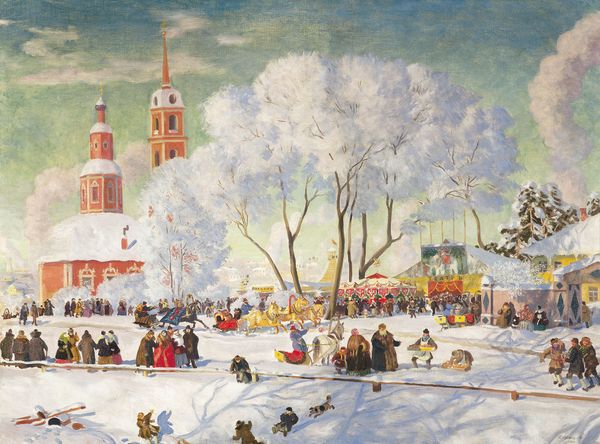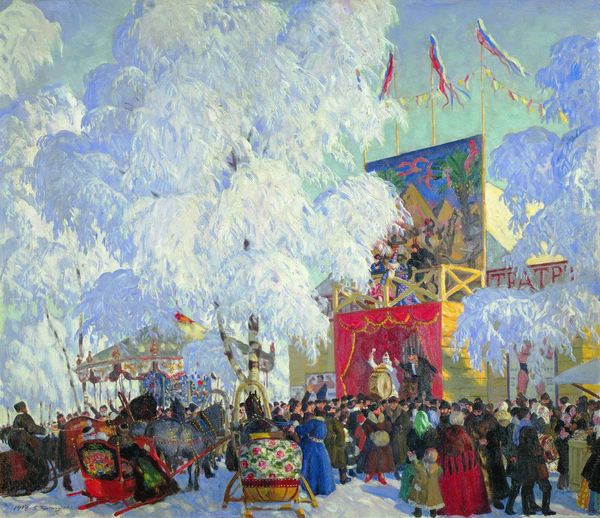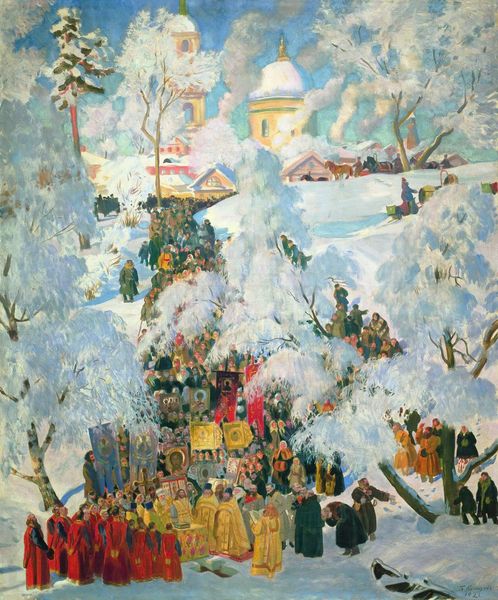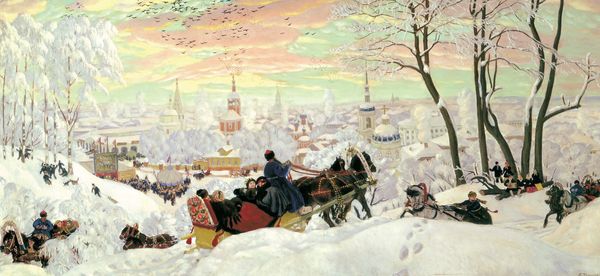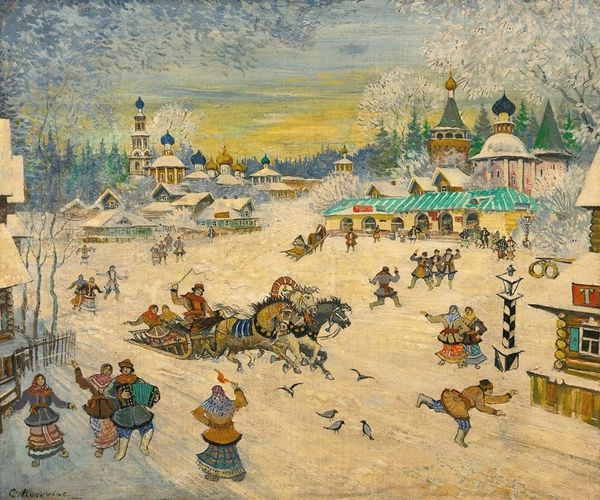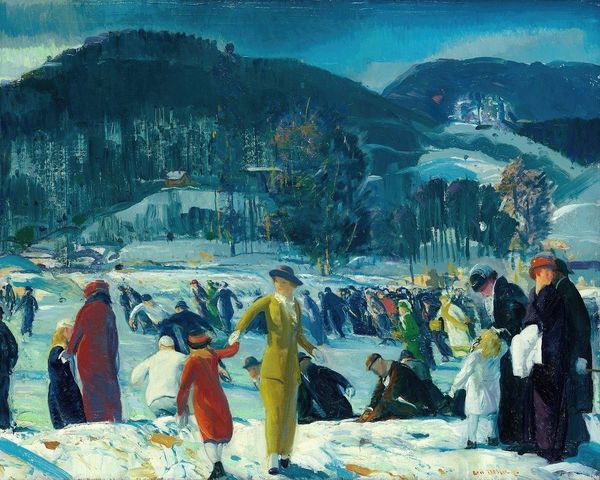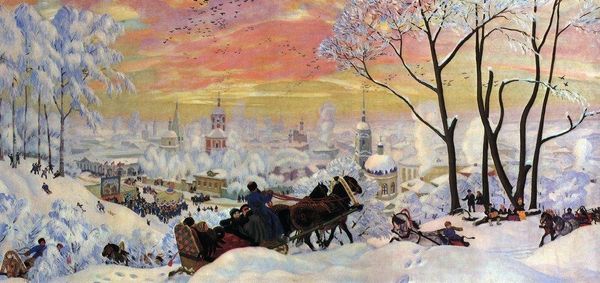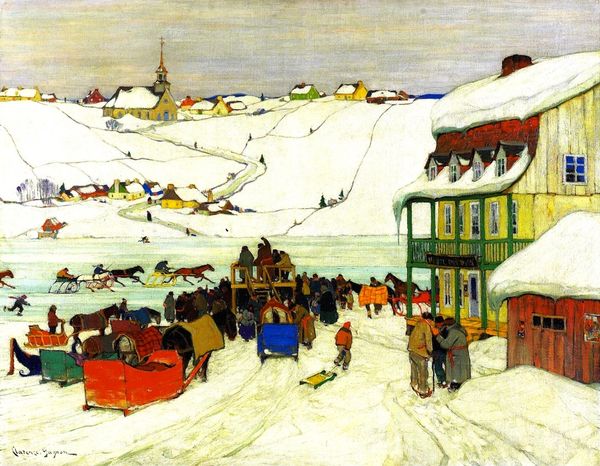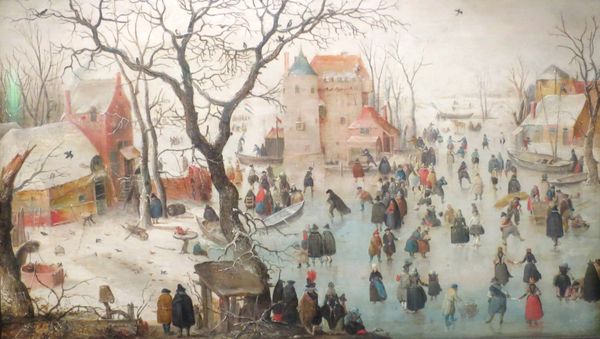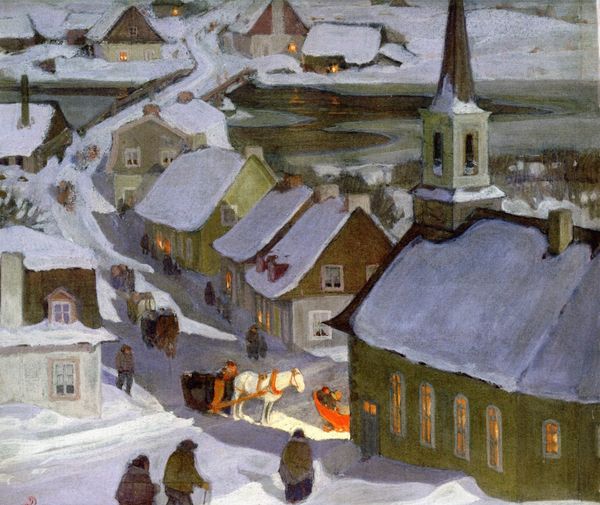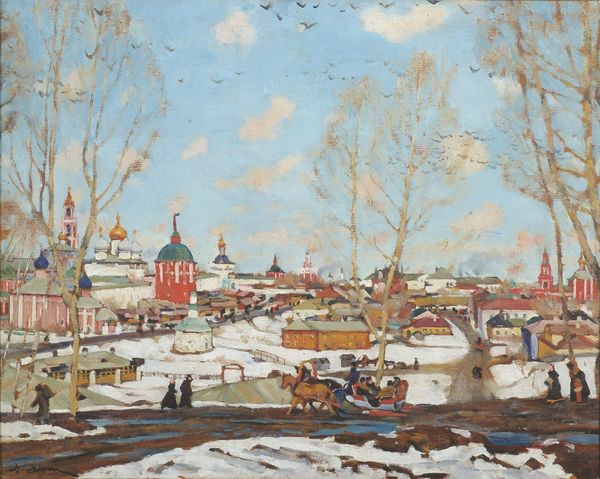
#
tree
#
abstract painting
#
impressionist painting style
#
winter
#
house
#
impressionist landscape
#
possibly oil pastel
#
oil painting
#
acrylic on canvas
#
street graffiti
#
naive art
#
square
#
painting painterly
#
street
#
watercolor
#
building
Copyright: Public domain
Editor: So, this is Boris Kustodiev's "Shrove-Tide," painted in 1919. It just explodes with activity; a really bustling winter scene. It's incredibly detailed, almost overwhelming to take it all in at once. What stands out to you most in this painting? Curator: It sings to me of nostalgia, of a Russia lost to revolution, rendered in strokes as joyful as they are poignant. Doesn't it seem as though Kustodiev is trying to hold onto something slipping through his fingers? I mean, look at the vibrant theatre signs and troikas racing through the snow – they’re almost feverish in their intensity. Makes you wonder what personal significance these vibrant elements held for him, painting this so soon after the revolution, don’t you think? Editor: Absolutely, I can feel that longing. So it is like he uses the Shrove-Tide festival to express his feelings. Curator: Precisely! Shrove-Tide, or Maslenitsa, was the last hurrah before Lent, a week of joyous abandon. He juxtaposes this fleeting festivity against the backdrop of looming change; the houses seem to huddle together against the encroaching historical winter. Don’t you find the painting so alive? Does that liveliness somehow enhance the feeling of loss? Editor: I see what you mean, the high-spiritedness almost underscores a deeper sense of melancholic feeling...knowing this couldn’t last. The fleeting moment captured as history happened. It makes me see the painting with new eyes now. Thank you! Curator: The pleasure was all mine! Art always benefits from such friendly exchanges.
Comments
No comments
Be the first to comment and join the conversation on the ultimate creative platform.
